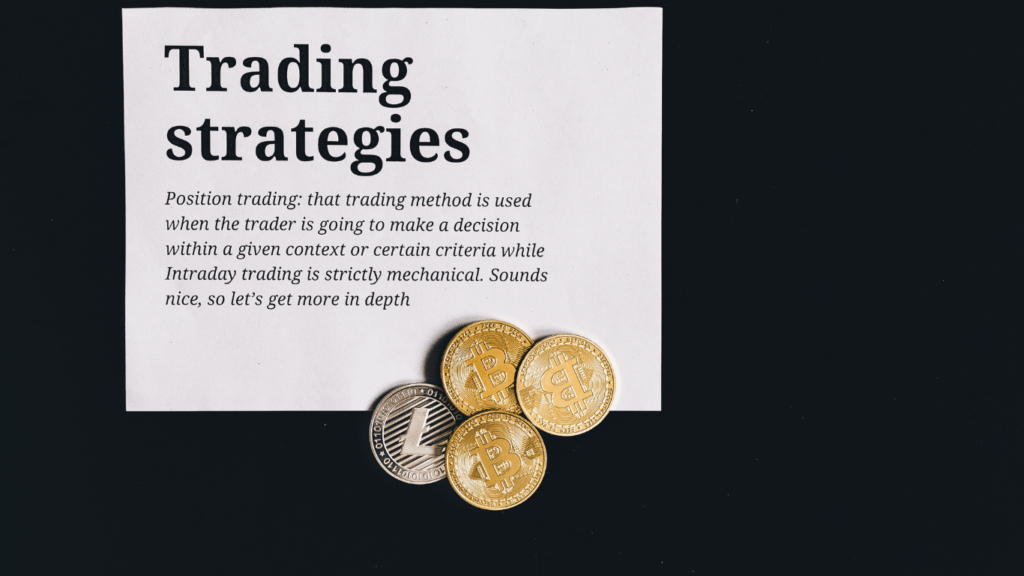Understanding Cryptocurrency Trading
Cryptocurrency trading involves buying and selling digital assets like Bitcoin, Ethereum, and others. It’s based on the fluctuation of asset prices on various exchanges. Traders capitalize on price differences to profit.
Market Dynamics
In cryptocurrency trading, market dynamics play a crucial role. Unlike traditional markets, cryptocurrencies operate 24/7. This continuous operation creates constant opportunities and risks. Market sentiment, influenced by news, regulations, and technological advancements, drives price movements.
Types of Trading
Several trading styles exist in cryptocurrency markets:
- Day Trading: Day traders open and close trades within a single day, aiming to profit from short-term price movements.
- Swing Trading: Swing traders hold positions for days or weeks, capturing medium-term market moves.
- Scalping: Scalpers make multiple small trades to accumulate profits from small price changes.
Fundamental and Technical Analysis
Cryptocurrency traders use two main types of analysis:
- Fundamental Analysis (FA): FA involves evaluating a coin’s underlying value by looking at factors like its team, technology, and market potential. Traders assess long-term project viability.
- Technical Analysis (TA): TA focuses on historical price charts and patterns. Traders use indicators like moving averages and relative strength index (RSI) to predict future price movements.
Risk Management
Effective risk management is vital in cryptocurrency trading. Traders should diversify their portfolios to mitigate risk. Setting stop-loss orders can prevent significant losses by automatically closing positions at predetermined levels.
Exchange Selection
Choosing the right exchange is essential for trading. Reputable exchanges offer better security features, liquidity, and trading tools. Popular exchanges include Binance, Coinbase, and Kraken.
Keeping Abreast of News
Staying updated with industry news is crucial in cryptocurrency trading. Market trends can change rapidly based on new information. Trusted news sources and official announcements impact market sentiment and asset prices.
By understanding these components, you can develop a solid foundation for successful cryptocurrency trading.
Setting Clear Objectives
Defining precise objectives is vital for any crypto trading plan. It helps align efforts with desired outcomes and measure progress.
Short-term vs. Long-term Goals
Identifying both short-term and long-term goals anchors your trading strategy. Short-term goals focus on immediate gains, such as capitalizing on market fluctuations over days or weeks.
For instance, aiming to achieve a 5% portfolio growth within one month is a short-term goal. Long-term goals, however, aim at sustained growth over years. Examples include holding specific cryptocurrencies for retirement or long-term wealth accumulation. By distinguishing these goals, traders can allocate resources and efforts more efficiently.
Risk Tolerance Assessment
Assessing risk tolerance ensures your trading approach matches your comfort level with losing investments. Begin by evaluating your financial stability and willingness to endure potential losses.
For example, an individual with a high-risk tolerance might focus on high-volatility cryptocurrencies, while someone with a low-risk tolerance might prefer stable, less volatile assets. Conducting this assessment helps tailor your trading plan to your financial situation and psychological readiness, thereby avoiding unnecessary stress and financial strain.
By incorporating clear objectives, your crypto trading plan becomes a more structured and effective tool for navigating the cryptocurrency market.
Market Research and Analysis
Market research and analysis are crucial to understanding the crypto market’s dynamics and making informed trading decisions. I focus on three primary types of analysis: fundamental, technical, and sentiment.
Fundamental Analysis
Fundamental analysis evaluates the intrinsic value of a cryptocurrency by examining various factors. I consider the following:
- Project Whitepaper: A project’s whitepaper provides insight into its technology, goals, and roadmap. For instance, Bitcoin’s whitepaper outlines its peer-to-peer electronic cash system.
- Team and Partnerships: The credibility and expertise of the development team and strategic partnerships can drive a cryptocurrency’s success. Ethereum has a well-known team led by Vitalik Buterin.
- Adoption and Use Case: Analyzing real-world applications and the adoption rate of the cryptocurrency helps determine its long-term viability. For example, Chainlink uses decentralized oracles to connect smart contracts with external data.
Technical Analysis
Technical analysis involves predicting future price movements based on historical price and volume data. I utilize the following tools and indicators:
- Candlestick Charts: These charts display price movements over specific periods, revealing trends and potential reversals. A bullish engulfing pattern may indicate a price increase.
- Moving Averages: Simple and exponential moving averages help identify trends and potential buy or sell signals. The 50-day and 200-day moving averages are commonly used.
- Relative Strength Index (RSI): RSI measures the speed and change of price movements, indicating overbought or oversold conditions. An RSI above 70 suggests overbought, while below 30 suggests oversold.
Sentiment Analysis
Sentiment analysis gauges the market mood to predict price movements based on collective trader psychology. I monitor these elements:
- Social Media Trends: Platforms like Twitter and Reddit are valuable for gauging public sentiment. For instance, positive chatter about a cryptocurrency can drive its price up.
- News and Announcements: Market-moving news and official announcements affect sentiment. A partnership announcement can result in a price spike.
- Fear and Greed Index: This index measures market emotions, with extreme fear possibly indicating a buying opportunity and extreme greed hinting at a market correction.
By combining these analyses, I form a well-rounded understanding of the crypto market and enhance my trading strategy.
Developing a Trading Strategy

A solid crypto trading plan hinges on a well-crafted trading strategy. This strategy should be informed by various analyses to enhance decision-making.
Types of Trading Strategies
Diverse trading strategies cater to different risk appetites and time commitments.
- Day Trading: Involves making multiple trades within a single day to capitalize on short-term market movements.
- Swing Trading: Focuses on capturing gains over a few days to weeks, based on market momentum or trends.
- Scalping: Aims for small, frequent profits by taking advantage of minute price changes.
- Position Trading: Involves holding assets for an extended period, ranging from months to years, relying on long-term market trends.
Entry and Exit Points
Critical for minimizing risk, entry and exit points should be based on thorough analysis.
- Trend Identification: Use moving averages and trend lines to spot market direction.
- Support and Resistance: Identify key price levels where assets tend to reverse or pause, impacting entry and exit decisions.
- Indicators: Utilize tools like RSI (Relative Strength Index) and MACD (Moving Average Convergence Divergence) to signal ideal trading opportunities.
Risk Management Techniques
Effective risk management preserves capital and limits losses.
- Stop-Loss Orders: Automatically sell assets once they reach a predetermined price to prevent significant losses.
- Portfolio Diversification: Spread investments across various cryptocurrencies to mitigate risk.
- Position Sizing: Allocate a fixed percentage of total capital per trade to control exposure.
Applying these components—trading strategies, entry and exit points, and risk management—creates a robust trading plan that aligns with individual goals and risk tolerance.
Choosing the Right Tools and Platforms
Choosing the right tools and platforms proves essential for successful crypto trading. The right combination maximizes efficiency and effectiveness in executing trades.
Trading Platforms
Selecting an appropriate trading platform impacts your trading experience and success. Look for platforms offering low fees, high liquidity, and a wide range of cryptocurrencies.
I prefer platforms like Binance, Coinbase Pro, and Kraken because they possess user-friendly interfaces, strong security measures, and advanced trading features. Verify that the platform is regulated and complies with legal requirements to reduce risks.
Analytical Tools
Effective analysis hinges on using robust analytical tools. I recommend tools such as TradingView for comprehensive charting options and Coinigy for integrating multiple exchange accounts.
These tools offer technical indicators like Moving Averages, RSI, and MACD, which help in identifying trends, support, and resistance levels. Regularly use these tools to make informed decisions based on real-time data and historical trends.
Security Measures
Security in crypto trading cannot be overstated. Emphasize platforms and tools that offer features such as two-factor authentication (2FA), encryption, and cold storage options.
I suggest enabling 2FA on all exchanges and using hardware wallets like Ledger or Trezor for storing significant amounts of crypto. Remain vigilant by updating software and never sharing private keys or sensitive information online.
Continuous Learning and Adjusting the Plan
Crypto trading requires commitment to continuous learning. Adapting the plan based on new insights ensures long-term success.
Keeping Up with Market Trends
To stay profitable, I regularly track market trends. Sources include news sites like CoinDesk and CoinTelegraph. I also monitor social media platforms where influencers share insights. Subscribing to newsletters from industry leaders helps too. This continuous information stream lets me adjust my strategies swiftly.
Learning from Mistakes
Analyzing past trades is crucial. I review my trade logs to identify patterns in wins and losses. This reflection helps me understand what works and what doesn’t. If I notice recurring mistakes, like poor timing, I adjust my plan to address these issues. Learning from past errors refines my strategy consistently.
Seeking Professional Advice
Consulting experts accelerates learning. I engage with seasoned traders via forums like Reddit and Bitcointalk. Attending webinars and virtual conferences provides deeper insights. I also consider services from professional advisors for personalized guidance. This external advice complements my knowledge and enhances my trading plan.

 Alice Morillo is a prominent figure at The Digi Chain Exchange, known for her passion and expertise in the field of cryptocurrency and digital finance. With a keen interest in the evolving landscape of blockchain technology, Alice has dedicated herself to providing insightful content that helps both new and seasoned investors navigate the complexities of the crypto world. Her contributions to The Digi Chain Exchange reflect her deep understanding of market trends, trading strategies, and the regulatory environment surrounding digital assets.
Alice Morillo is a prominent figure at The Digi Chain Exchange, known for her passion and expertise in the field of cryptocurrency and digital finance. With a keen interest in the evolving landscape of blockchain technology, Alice has dedicated herself to providing insightful content that helps both new and seasoned investors navigate the complexities of the crypto world. Her contributions to The Digi Chain Exchange reflect her deep understanding of market trends, trading strategies, and the regulatory environment surrounding digital assets.

